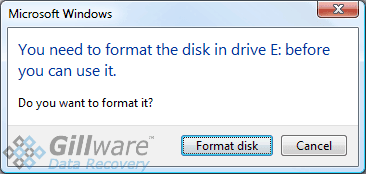NAS Device Drive Prompts for Reformat
This client brought their Western Digital My Cloud to the NAS recovery experts at Gillware when the device cut them off from their data. They’d been using the personal NAS device to store their family photos and videos… until, that is, the whole thing went kaput. Fortunately, Gillware’s data recovery specialists were there to help them get their irretrievable data back.
NAS Recovery Case Study: Prompts for Reformat
Drive Model: Western Digital WD30EURS-63R8UY0
Drive Capacity: 3 TB
Operating/File System: Linux Ext3
Data Loss Situation: Western Digital My Cloud personal NAS prompts for reformat when user attempts to connect to it
Type of Data Recovered: Photos and videos
Binary Read: 99.9%
Gillware Data Recovery Case Rating: 9
Our engineers took a look at the hard drive inside the client’s My Cloud NAS in our cleanroom data recovery lab. The drive itself seemed fairly physically healthy. The problem with this drive lay in its firmware.
Hard drive firmware does a lot of the heavy lifting when it comes to your hard drive’s daily functions. In fact, it works like the “operating system” of your hard drive. Just as your computer’s O/S brings all of the separate components of your computer together to make it work, hard drive firmware brings all of your hard drive’s components together.
As one of its many responsibilities, the firmware tells your hard drive’s read/write heads how to properly read data from the platters. The firmware itself is stored on the drive’s platters, on the outermost rings which are easiest for the heads to read. After successfully reading the firmware, the heads know where to go next. Of course, if there is a problem with either the heads or the firmware, you can end up in a situation like our client’s.
NAS Recovery: Fixing Finicky Firmware Failures
Just like your computer’s operating system, your hard drive’s firmware can have problems. When your operating system encounters something it doesn’t know what to do with, it suffers a kernel panic and crashes. A similar situation can happen with hard drive firmware. When firmware fails, it takes very specialized tools and experts with years of training to properly access and repair it. Only a handful of these experts exist in the world. Most of them work at professional data recovery labs like Gillware.
Repairing a hard drive’s firmware doesn’t usually bring a hard drive all the way back to life. A hard drive with its firmware fixed rarely performs optimally, and any firmware bug that gets fixed has a high chance of reasserting itself. Fortunately, the fault-tolerant hard disk imaging tools we use in our data recovery lab give our technicians a hand in dealing with these foibles, even if a repaired hard drive still wouldn’t work when plugged into any other machine.
After fixing the Western Digital hard drive’s firmware issue, our data recovery engineers successfully imaged 99.9% of the sectors on the drive’s platters. After analyzing the drive’s Linux Ext3 filesystem, our technicians could recover nearly all of the user’s photos and videos. Due to a handful of bad sectors on the platters, a handful of recovered files were incomplete. But overall, our engineers’ efforts yielded excellent results. We rated this NAS recovery case a 9 on our ten-point scale.
Be Wary of Accidental Reformats
 It’s not uncommon for external devices to ask you to reformat them when they fail. When you have a failing hard drive, in most cases your computer will still recognize that you’ve plugged in a hard drive. Your computer will try its best to read the drive. But it can’t access any partition metadata to tell it how the drive is organized (because the hard drive is failing or has failed). To your computer, the drive is blank. So, of course, your computer asks you if you want to format the drive. However, if your hard drive is not recognized you may have a more serious, physical hard drive issue.
It’s not uncommon for external devices to ask you to reformat them when they fail. When you have a failing hard drive, in most cases your computer will still recognize that you’ve plugged in a hard drive. Your computer will try its best to read the drive. But it can’t access any partition metadata to tell it how the drive is organized (because the hard drive is failing or has failed). To your computer, the drive is blank. So, of course, your computer asks you if you want to format the drive. However, if your hard drive is not recognized you may have a more serious, physical hard drive issue.
If the issue isn’t physical—for example, if the problem is a corrupted partition table—formatting the drive will get it to work again. On the other hand, formatting the drive won’t bring the drive back to life if the problem lies within the drive’s read/write heads or firmware. However, in either case, reformatting the drive won’t get you any closer to the data you’ve lost. In fact, it can make your data loss situation even worse! For example, if a hard drive has a corrupt boot sector and you reformat the drive, you end up making two problems for our data recovery engineers to solve where there used to only be one. Trying to issue commands to a failing hard drive can also exacerbate its failure and cause further damage if done improperly.
When your previously-healthy hard drive asks you to reformat it, tread carefully. In the heat of the moment, it’s all too easy to let a slip of the finger make your situation even worse and put you and your data in even hotter water. When your hard drive fails, the most important thing you can do is keep a cool head.
